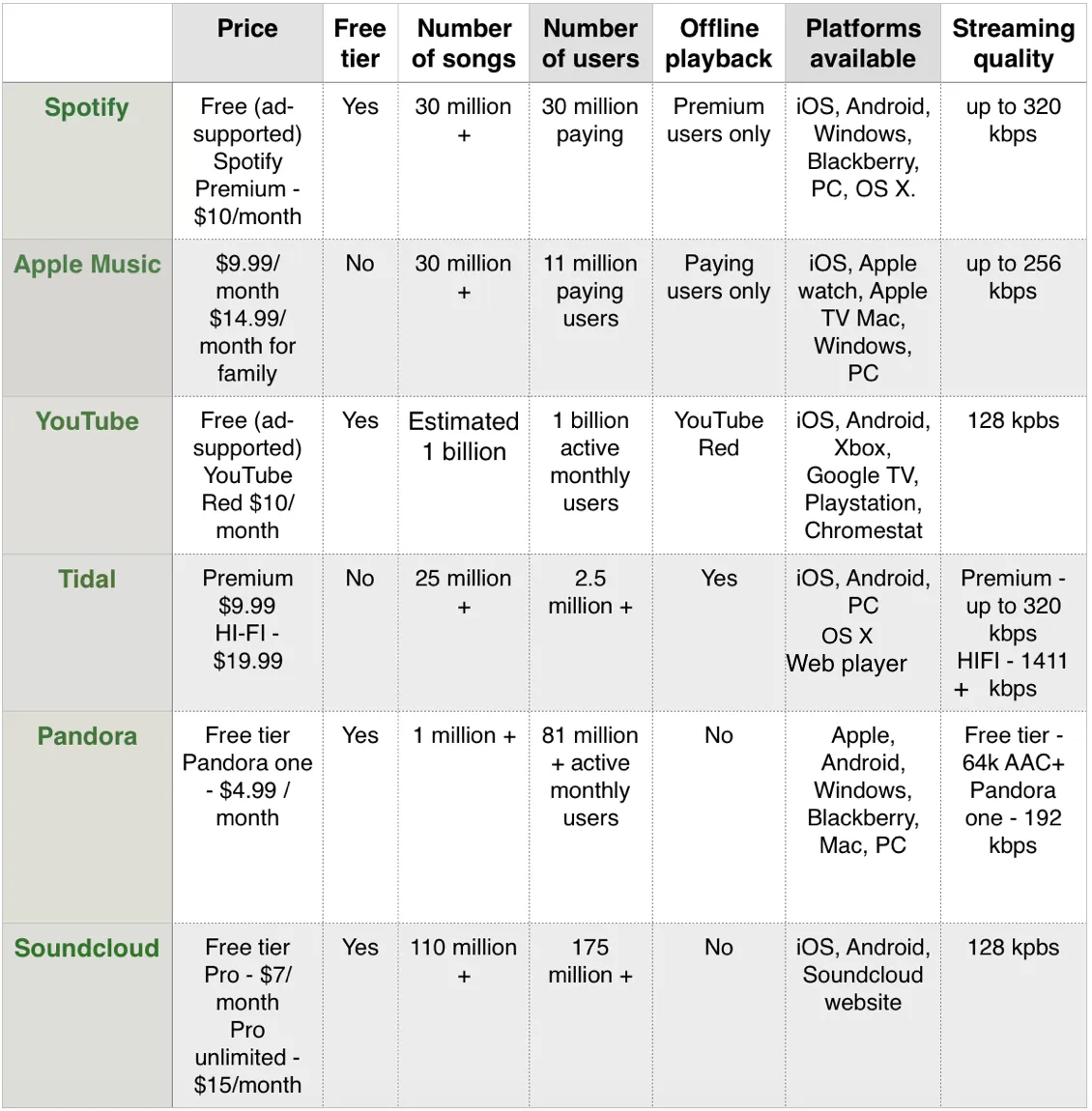7 Unbeatable Tools Every Content Creator Needs
7 Unbeatable Tools Every Content Creator Needs
Related Articles: 7 Unbeatable Tools Every Content Creator Needs
- Essential 7 Video Editing Tools Every Filmmaker Must Master
- 5 Amazing Note-Taking Apps To Supercharge Your Productivity
- Amazing 5 Budgeting Apps To Master Your Finances
- Essential Project Management Software: 5 Game-Changing Tools For Teams
- Amazingly Powerful: 5 Top Graphic Design Software Choices For Beginners
Introduction
With enthusiasm, let’s navigate through the intriguing topic related to 7 Unbeatable Tools Every Content Creator Needs. Let’s weave interesting information and offer fresh perspectives to the readers.
Table of Content
7 Unbeatable Tools Every Content Creator Needs

Creating compelling content is a multifaceted process, demanding creativity, strategy, and a hefty dose of technical prowess. While inspiration might strike like lightning, transforming that spark into polished, shareable content requires the right tools. This article explores seven indispensable tools every content creator, regardless of their niche, should have in their arsenal. From brainstorming and writing to editing and promotion, these tools will streamline your workflow, enhance your output, and ultimately, help you conquer your content creation goals.
1. A Robust Writing & Editing Platform:
The foundation of any content piece lies in the words themselves. Therefore, choosing the right writing and editing platform is paramount. Gone are the days of relying solely on Microsoft Word. Modern content creators need a platform that offers more than just basic word processing. Look for features such as:
- Grammar and spell-checking: This is a no-brainer. Typos and grammatical errors erode credibility and professionalism. Many platforms offer sophisticated grammar checkers that go beyond simple spell-checking, identifying stylistic issues and suggesting improvements. Grammarly, ProWritingAid, and even the built-in grammar checkers in platforms like Google Docs are excellent options.
- Collaboration features: If you work with a team, collaborative features are essential. Real-time co-editing, comment threads, and version history allow for seamless teamwork and efficient feedback cycles. Google Docs excels in this area, while platforms like Microsoft Word Online also offer robust collaboration capabilities.
- SEO optimization tools: Many writing platforms now integrate SEO tools, allowing you to optimize your content for search engines directly within the writing interface. This helps improve your content’s visibility and reach a wider audience. Yoast SEO (for WordPress) is a prime example of such a tool.
- Content organization: The ability to easily organize your content, whether through folders, tags, or other systems, is crucial for managing large volumes of work. Consider platforms that allow you to categorize and retrieve your writing efficiently.
Beyond specific software, consider investing in a high-quality keyboard and a comfortable workspace. Ergonomics matter; discomfort can significantly impact your productivity and the quality of your writing.
2. A Versatile Design Software:
Visual content is king in today’s digital landscape. No matter what type of content you create – blog posts, social media updates, videos, or infographics – captivating visuals are essential for grabbing attention and conveying your message effectively. Therefore, proficiency in at least one design software is a must.
- Canva: For beginners and those needing a user-friendly option, Canva is an excellent choice. It offers a drag-and-drop interface, pre-designed templates, and a vast library of images and graphics, making it easy to create visually appealing content quickly.
- Adobe Photoshop/Illustrator: For more advanced users who need finer control and professional-level features, Adobe Photoshop (for photo editing) and Illustrator (for vector graphics) are industry standards. These powerful tools allow for intricate design work and precise manipulation of images and graphics. However, they have a steeper learning curve and a higher price tag.
- Figma/Sketch: These vector-based design tools are popular among web designers and UI/UX professionals. They offer powerful collaboration features and are excellent for creating website mockups, user interfaces, and other digital assets.

Regardless of your chosen software, understanding basic design principles like color theory, typography, and composition is crucial for creating effective visual content.
3. A Powerful Video Editing Suite:
Video content is experiencing explosive growth, making video editing skills increasingly important for content creators. Whether you’re creating explainer videos, product demos, or social media shorts, having a robust video editing suite is essential.
- Adobe Premiere Pro: Considered the industry standard, Premiere Pro offers a wide range of professional-grade features, including advanced color correction, audio mixing, and visual effects. However, it comes with a steep learning curve and a significant price tag.
- DaVinci Resolve: A powerful and versatile alternative to Premiere Pro, DaVinci Resolve offers a free version with a surprisingly comprehensive feature set, alongside paid professional versions with even more capabilities.
- Final Cut Pro: A popular choice among Mac users, Final Cut Pro offers a user-friendly interface and a powerful set of tools for video editing.
Beyond software, investing in good quality audio equipment (microphone and headphones) is critical for professional-sounding videos. Poor audio quality can significantly detract from even the best-looking video.
4. Social Media Management Tools:

Efficiently managing your social media presence is crucial for reaching your target audience. Social media management tools help streamline this process, saving you time and effort.
- Buffer: This tool allows you to schedule posts across multiple social media platforms, analyze your performance, and engage with your audience.
- Hootsuite: Similar to Buffer, Hootsuite offers a comprehensive suite of features for managing social media, including scheduling, analytics, and team collaboration.
- Sprout Social: A more advanced option, Sprout Social provides robust analytics, customer service features, and social listening capabilities.
Choosing the right tool depends on your specific needs and budget. Start with a free plan or trial to see which platform fits your workflow best.
5. Project Management Software:
As your content creation efforts grow, effective project management becomes essential. Project management software helps you organize tasks, track progress, and collaborate with your team.
- Asana: A popular choice for teams of all sizes, Asana allows you to create projects, assign tasks, set deadlines, and track progress.
- Trello: Known for its visual Kanban board interface, Trello is great for visualizing workflows and managing tasks in a collaborative manner.
- Monday.com: A highly customizable platform, Monday.com offers a wide range of features for project management, including time tracking, automation, and reporting.
The best project management software depends on your team’s size, workflow, and preferences. Many offer free plans for smaller teams.
6. Analytics and Tracking Tools:
Understanding your audience and the effectiveness of your content is crucial for continuous improvement. Analytics and tracking tools provide valuable insights into your content’s performance.
- Google Analytics: A free and powerful tool, Google Analytics provides detailed data on website traffic, user behavior, and content performance.
- Social media analytics: Each social media platform offers its own analytics dashboard, providing insights into your audience engagement, reach, and other key metrics.
- Heatmap tools: Heatmaps visually represent user interactions on your website, showing where users click, scroll, and spend their time. This data can inform design and content improvements.
Analyzing this data allows you to understand what resonates with your audience and refine your content strategy accordingly.
7. A Reliable Cloud Storage Solution:
Backing up your work is paramount. Cloud storage solutions offer secure and accessible storage for your files, preventing data loss and ensuring you can access your work from anywhere.
- Google Drive: Integrated with other Google services, Google Drive offers ample storage space and seamless collaboration features.
- Dropbox: A popular choice for its ease of use and cross-platform compatibility, Dropbox offers reliable cloud storage and file sharing capabilities.
- iCloud: For Apple users, iCloud provides integrated cloud storage, seamlessly syncing your files across Apple devices.
Choosing the right cloud storage solution depends on your needs and budget. Many offer free plans with limited storage, while paid plans offer larger storage capacities and advanced features.
In conclusion, mastering content creation isn’t just about creativity; it’s about leveraging the right tools to enhance your workflow and maximize your impact. By incorporating these seven unbeatable tools into your process, you’ll be well-equipped to create high-quality content that resonates with your audience and achieves your goals. Remember that the best tools are those that seamlessly integrate into your workflow and empower you to focus on what matters most: crafting compelling stories and connecting with your audience.
Closure
Thus, we hope this article has provided valuable insights into 7 Unbeatable Tools Every Content Creator Needs. We hope you find this article informative and beneficial. See you in our next article!
google.com














































